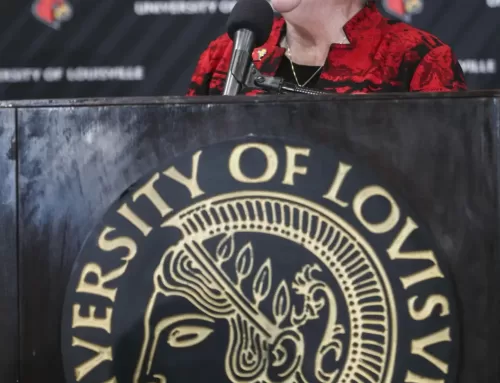By Michelle Eigenheer–
An ongoing cheating scandal at Harvard University has placed the issue of college cheating in the spotlight, even leading universities across the country to reassess their policies.
In May of 2012, a formal investigation was launched on 125 Harvard students. Suspicion arose after these “Introduction to Congress” students submitted their final exam for the class – a take-home exam. Harvard announced in late August that these students were under investigation for cheating, for working together, or for plagiarism.
According to Harvard’s newspaper, The Harvard Crimson, punishments will be administered to the students found guilty by the College’s Administration and will range from probation to forced withdrawal for the academic year.
Cheating is not a new thing. There are a number of 80’s and 90’s movies that feature scenes of people like Molly Ringwald or John Cusack passing notes during tests in order to get “The Perfect Score.”
With technology making leaps and bounds, the process of cheating has evolved way beyond the technique of writing a note on the back of the hand. Cheating has become sophisticated in a way that college administrators must accommodate and watch out for.
There are the classic or “old school” ways of cheating, such as the aforementioned ink-on-hand method. There is also the use of cheat sheets and the practice of sitting next to a friend who’ll share answers with you. There are even professors who don’t allow students to wear hats with bills during tests because they could have some answers written down on the underside. The University of Central Florida’s testing center has outlawed gum during tests because the chewing can be used to mask a student’s speaking into a hands-free device to an outside accomplice.
Then there’s the practice in practically every movie about Greek life ever made – the filing away of old tests. This route allows desperate students to study or memorize a professor’s old test copies and hope that said professor hasn’t come up with an updated version.
There are virtually countless ways to cheat on a test. It’s Google-able.
However, with the inventions of the cell phone and the Internet, cheating has become an entirely new beast.
Plagiarism is one of these beasts. The University of Louisville defines plagiarism as, “Representing the words or ideas of someone else as one’s own in any academic exercise.”
These days, students can obtain essays online with just a few clicks and the input of a Visa, MasterCard or American Express number. To combat this, many departments at the University of Louisville utilize programs that can scan an essay and look for key words or word patterns. These patterns often match up with essays existing within the system and indicate that a paper has been plagiarized. They not only scour the web for comparisons, but also compare the papers of students to each other in order to catch instances of unauthorized collaboration.
According to the Campus Computing Project, over 55 percent of colleges and universities enlist these kinds of services. Ulink provides U of L professors with the program SafeAssign.
Conversely, there are also programs available to students in order to ensure that they have not inadvertently plagiarized while writing a paper. Programs such as WriteCheck provide this service.
The rising trend in online testing is another beast borne of technological advancement.
According to articlesbase.com, administering tests online can offer many advantages. Online tests allow students to receive their scores on-the-spot, they cut down on the cost of printing tests, they can prove to be more interactive and they offer more flexible testing options.
They also offer a more unrestricted experience that can lead to easy cheating. Being unmonitored for an exam can allow people to pair up for the test, can provide the opportunity for people to take tests for others and can allow students to simply look up the correct answers.
There are professors at U of L who limit the number of ways students can cheat by having them use applications such as LockDown Browser, a service used by Blackboard, so that students may only open one browser window – their test. This doesn’t, however, prevent them from utilizing their notes, each other or their smartphones.
Smartphones are another way of cheating. iPhones and Androids are versatile instruments that can make test taking easier. The app PocketJustice can help the user remember Supreme Court cases for a political science exam while Notes can refresh the user on Newton’s Laws of Motion.
Cell phones can also be used to text questions and answers between test takers. Cell phones were the central mode of communication during the cheating ring at Stuyvesant High School, a prestigious Manhattan school located near Ground Zero. Students used cell phones to help each other on tests such as the Regents Exam – required testing for New York juniors. One student told New York Magazine that during one section of this exam, he was able to not only photograph every page of the test he was taking, but to also type them all out and text them to 140 classmates without being seen by the proctor. The cheating ring was busted not long after.
Cheating has come a long way since Molly Ringwald’s stint in Pretty in Pink. However, the ways of detecting cheating and plagiarism have evolved as well. Punishments for cheating can range from an F on a paper to suspension or expulsion from not only a program, but also the entire university.
In surveys by U.S. News and World report, 75 percent of college students admitted to cheating and almost 85 percent said that cheating was necessary to get ahead. 90% of college students didn’t believe that cheaters would be caught.
[email protected]
Photos: Tricia Stern/The Louisville Cardinal




